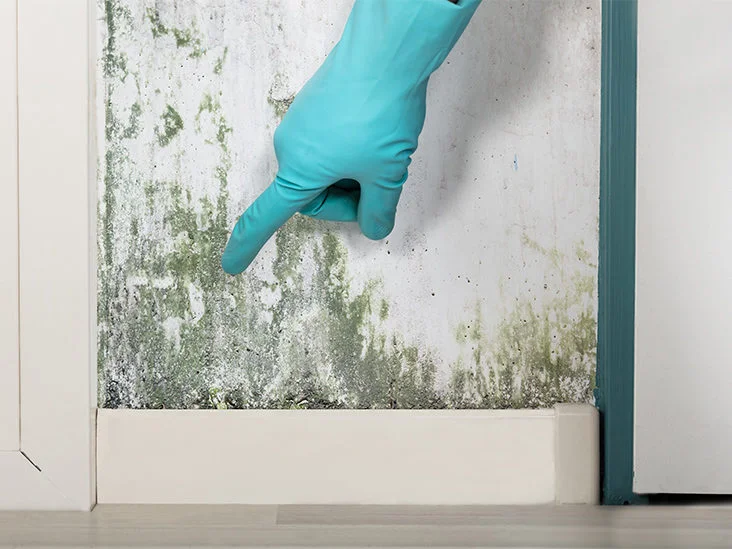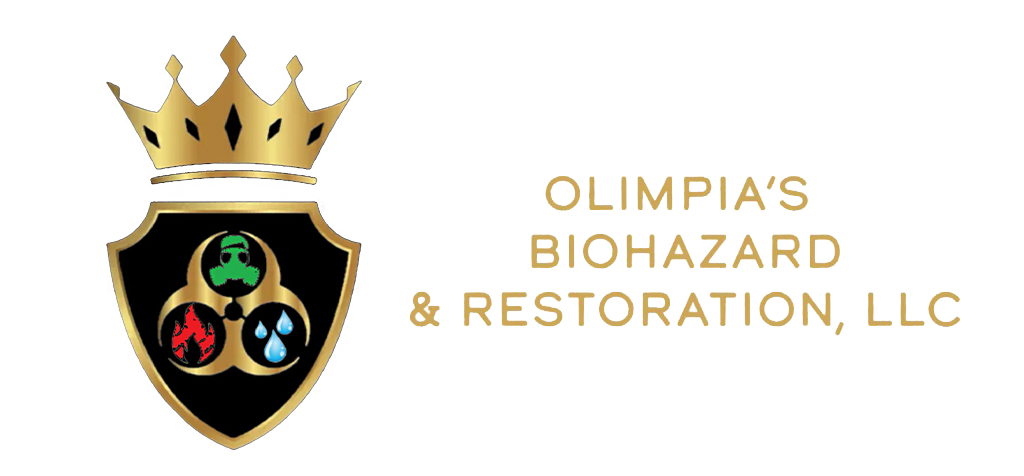Living in a coastal city like Portland, Oregon, means dealing with higher humidity levels, especially in certain areas of your house. Excessive moisture can create the perfect breeding ground for mold, which not only poses health risks but can also damage your property. Fortunately, there are several proactive measures you can take to prevent mold growth in high-moisture areas. Learn how to prevent mold in high-moisture areas. Trust Olimpia’s Biohazard & Restoration LLC, the experts in mold prevention.
Preventing Mold in High-Moisture Areas of Your House
In this guide, we’ll explore seven key strategies to keep your home mold-free, ensuring a healthier and safer living environment for you and your family.


Proper Ventilation
One of the most effective tip to prevent mold in high-moisture areas is by ensuring proper ventilation. Install exhaust fans in bathrooms, kitchens, and laundry rooms to remove excess moisture from the air. Make sure these fans are vented directly outside rather than into the attic or crawl space. Additionally, open windows when weather permits to allow fresh air circulation. Regularly clean and maintain your ventilation system to ensure it functions optimally. By improving airflow, you can reduce humidity levels and inhibit mold growth.
Dehumidification
High humidity levels can lead to moisture buildup in enclosed spaces such as basements and crawl spaces. To combat this, invest in a dehumidifier. Place it in the affected area to extract excess moisture from the air. Opt for a unit with a built-in hygrometer to monitor and maintain the desired humidity level, typically around 40-50%. Empty and clean the dehumidifier regularly to prevent mold growth inside the device. This simple appliance can significantly reduce the risk of mold formation in high-moisture areas of your home.
Effective Insulation
Well-insulated walls, windows, and roofs play a crucial role in preventing mold growth. Insulation helps regulate temperature and reduces condensation, which can lead to moisture accumulation. Ensure your home’s insulation is in good condition and properly installed. Pay special attention to areas prone to condensation, such as windowsills, pipes, and cold walls. Consider using insulation materials with moisture-resistant properties, such as closed-cell foam or rock wool. By enhancing your home’s insulation, you can minimize moisture-related issues and keep mold at bay.
Regular Maintenance
Regular maintenance is essential to prevent mold growth in high-moisture areas. Check for any leaks in pipes, roofs, or windows and repair them promptly. Clean gutters and downspouts regularly to ensure proper drainage and prevent water from seeping into your home’s foundation. Inspect and clean HVAC systems, including air filters, to avoid moisture buildup and the spread of mold spores. Regularly inspect areas prone to moisture, such as bathrooms and laundry rooms, and address any signs of dampness or mold growth immediately. Diligent maintenance will help you identify and mitigate potential mold issues before they become major problems.
Mold-Resistant Materials
Choosing the right materials can make a significant difference in preventing mold growth. Opt for mold-resistant drywall and paint for high-moisture areas such as bathrooms and kitchens. These materials contain additives that inhibit mold growth. Consider using mold-resistant caulk and grout for areas exposed to water, such as showers and tubs. When selecting flooring, opt for options like ceramic tiles, vinyl, or laminate, as they are less susceptible to mold than carpeting. By selecting mold-resistant materials, you can create an environment that is less conducive to mold growth. For professional mold removal, rely on Olimpia’s Biohazard & Restoration LLC, the experts in safe and effective mold remediation.
Proper Water Management
Effective water management is crucial for preventing mold. Ensure that rainwater drains away from your house by directing downspouts away from the foundation. Grade the landscape to slope away from the house to prevent water accumulation. Use a vapor barrier in crawl spaces and basements to minimize moisture infiltration. Install and maintain sump pumps in areas prone to flooding. Regularly inspect and maintain plumbing systems to prevent leaks and pipe bursts. By managing water effectively, you can minimize the risk of moisture-related problems and inhibit mold growth.
Controlling Condensation
Controlling condensation is key to preventing mold formation in high-moisture areas. Use exhaust fans or open windows when cooking, showering, or doing laundry to reduce moisture buildup. Insulate windows to prevent condensation on cold surfaces. Use weather stripping to seal gaps around windows and doors, reducing temperature differences that lead to condensation. Consider using a moisture-absorbing product, such as desiccants or moisture absorbers, in areas prone to condensation, like closets or cabinets. By addressing condensation issues, you can minimize excess moisture and prevent mold growth.
Proper Ventilation
One of the most effective ways to prevent mold in high-moisture areas is by ensuring proper ventilation. Install exhaust fans in bathrooms, kitchens, and laundry rooms to remove excess moisture from the air. Make sure these fans are vented directly outside rather than into the attic or crawl space. Additionally, open windows when weather permits to allow fresh air circulation. Regularly clean and maintain your ventilation system to ensure it functions optimally. By improving airflow, you can reduce humidity levels and inhibit mold growth.
FAQs:
How do you prevent mold in high humidity?
Properly ventilate the area, use dehumidifiers, fix leaks promptly, and ensure effective insulation to prevent mold in high humidity.
Can too much moisture in the house cause mold?
Yes, excessive moisture in the house creates a conducive environment for mold growth.
Does mold thrive in homes with high humidity?
Yes, mold thrives in homes with high humidity as the excess moisture provides an ideal breeding ground for mold spores.
What humidity level keeps mold from growing?
Keeping indoor humidity levels below 50% generally prevents mold from growing, as higher levels encourage mold growth and reproduction.
Conclusion
Preventing mold in high-moisture areas of your Portland home requires a combination of proactive measures. Proper ventilation, dehumidification, effective insulation, regular maintenance, mold-resistant materials, water management, and controlling condensation are essential strategies. By implementing these preventive measures, you can reduce humidity levels, minimize moisture buildup, and create an environment that discourages mold growth. Regular inspections, prompt repairs, and a proactive approach to mold prevention will help you maintain a healthier and mold-free home. Remember, early intervention is key to mitigating mold-related risks and ensuring the well-being of your family.
